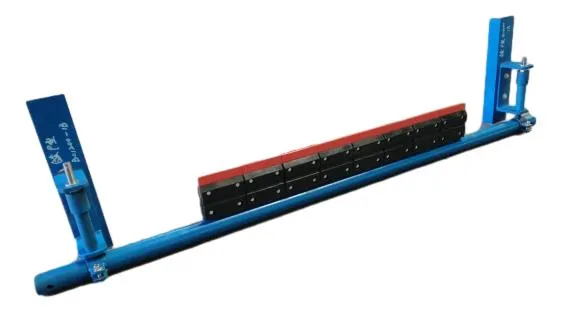 Afrikaans
Afrikaans  Albanian
Albanian  Amharic
Amharic  Arabic
Arabic  Armenian
Armenian  Azerbaijani
Azerbaijani  Basque
Basque  Belarusian
Belarusian  Bengali
Bengali  Bosnian
Bosnian  Bulgarian
Bulgarian  Catalan
Catalan  Cebuano
Cebuano  Corsican
Corsican  Croatian
Croatian  Czech
Czech  Danish
Danish  Dutch
Dutch  English
English  Esperanto
Esperanto  Estonian
Estonian  Finnish
Finnish  French
French  Frisian
Frisian  Galician
Galician  Georgian
Georgian  German
German  Greek
Greek  Gujarati
Gujarati  Haitian Creole
Haitian Creole  hausa
hausa  hawaiian
hawaiian  Hebrew
Hebrew  Hindi
Hindi  Miao
Miao  Hungarian
Hungarian  Icelandic
Icelandic  igbo
igbo  Indonesian
Indonesian  irish
irish  Italian
Italian  Japanese
Japanese  Javanese
Javanese  Kannada
Kannada  kazakh
kazakh  Khmer
Khmer  Rwandese
Rwandese  Korean
Korean  Kurdish
Kurdish  Kyrgyz
Kyrgyz  Lao
Lao  Latin
Latin  Latvian
Latvian  Lithuanian
Lithuanian  Luxembourgish
Luxembourgish  Macedonian
Macedonian  Malgashi
Malgashi  Malay
Malay  Malayalam
Malayalam  Maltese
Maltese  Maori
Maori  Marathi
Marathi  Mongolian
Mongolian  Myanmar
Myanmar  Nepali
Nepali  Norwegian
Norwegian  Norwegian
Norwegian  Occitan
Occitan  Pashto
Pashto  Persian
Persian  Polish
Polish  Portuguese
Portuguese  Punjabi
Punjabi  Romanian
Romanian  Russian
Russian  Samoan
Samoan  Scottish Gaelic
Scottish Gaelic  Serbian
Serbian  Sesotho
Sesotho  Shona
Shona  Sindhi
Sindhi  Sinhala
Sinhala  Slovak
Slovak  Slovenian
Slovenian  Somali
Somali  Spanish
Spanish  Sundanese
Sundanese  Swahili
Swahili  Swedish
Swedish  Tagalog
Tagalog  Tajik
Tajik  Tamil
Tamil  Tatar
Tatar  Telugu
Telugu  Thai
Thai  Turkish
Turkish  Turkmen
Turkmen  Ukrainian
Ukrainian  Urdu
Urdu  Uighur
Uighur  Uzbek
Uzbek  Vietnamese
Vietnamese  Welsh
Welsh  Bantu
Bantu  Yiddish
Yiddish  Yoruba
Yoruba  Zulu
Zulu Analysis of Conveyor Head Drum Design and Its Impact on Material Handling Efficiency
Understanding the Conveyor Head Drum An Essential Component in Material Handling Systems
In the world of material handling and automation, the conveyor system is a crucial part of operations across various industries, ranging from manufacturing to food processing. One of the key components of any conveyor system is the conveyor head drum, which plays a pivotal role in the efficient movement of materials. This article delves into the importance, function, and maintenance of conveyor head drums.
What is a Conveyor Head Drum?
The conveyor head drum, often referred to as the head pulley, is the first drum located at the loading end of a belt conveyor. It serves multiple functions, primarily acting as a drive pulley that propels the conveyor belt forward. The design and construction of the head drum are critical for the overall efficiency of the conveyor system, affecting its durability and performance.
Functions and Importance
1. Driving Mechanism The head drum is connected to a motor, which rotates it to move the conveyor belt. This rotation allows for the continuous transport of materials from one location to another. The efficiency of the head drum directly impacts the speed and reliability of the entire conveyor system.
2. Material Handling The head drum facilitates the loading of materials onto the conveyor belt. Its surface must provide adequate friction to ensure that the materials can be lifted and transported without slipping. This is particularly important in industries where heavy or bulk materials are handled.
3. Alignment and Tension Proper alignment and tension of the conveyor belt are essential for smooth operations. The head drum, in conjunction with the tail drum, helps maintain the correct tension in the belt, preventing sagging or unnecessary wear and tear. This alignment is critical to reduce the risk of belt tracking issues, which can lead to operational disruptions.
4. Safety Features Modern conveyor head drums are often equipped with safety features such as a guard to prevent accidental contact with moving parts, contributing to a safer working environment.
conveyor head drum

Maintenance of the Conveyor Head Drum
For optimal performance and longevity, regular maintenance of the conveyor head drum is essential. Here are some key maintenance practices
1. Regular Inspections Routine checks should be conducted to identify any signs of wear and tear on the drum surface. This includes inspecting for cracks, corrosion, or other damages that may compromise its structural integrity.
2. Belt Alignment Ensuring proper belt alignment is crucial. Misalignment can lead to uneven wear on the drum and the belt, potentially resulting in costly repairs or replacements.
3. Lubrication The bearings of the head drum should be adequately lubricated to reduce friction and ensure smooth operation. Lack of lubrication can lead to overheating and premature failure of components.
4. Cleaning The accumulation of dirt, debris, and materials can hinder the performance of the head drum. Regular cleaning helps maintain efficient operation and prevents blockages that can disrupt material flow.
5. Monitoring Performance Keeping track of the conveyor system's performance metrics, such as speed and load capacity, can help identify any deviations from normal operations that may indicate issues with the head drum or other components.
Conclusion
In summary, the conveyor head drum is a vital component in material handling systems, facilitating efficient movement and processing of materials. Understanding its functions and ensuring proper maintenance can significantly enhance the productivity and longevity of conveyor systems. As industries continue to evolve and demand greater efficiency, the importance of components like the conveyor head drum will only increase. By investing in quality equipment and regular maintenance, businesses can ensure their operations run smoothly and effectively.
-
Revolutionizing Conveyor Reliability with Advanced Rubber Lagging PulleysNewsJul.22,2025
-
Powering Precision and Durability with Expert Manufacturers of Conveyor ComponentsNewsJul.22,2025
-
Optimizing Conveyor Systems with Advanced Conveyor AccessoriesNewsJul.22,2025
-
Maximize Conveyor Efficiency with Quality Conveyor Idler PulleysNewsJul.22,2025
-
Future-Proof Your Conveyor System with High-Performance Polyurethane RollerNewsJul.22,2025
-
Driving Efficiency Forward with Quality Idlers and RollersNewsJul.22,2025





























